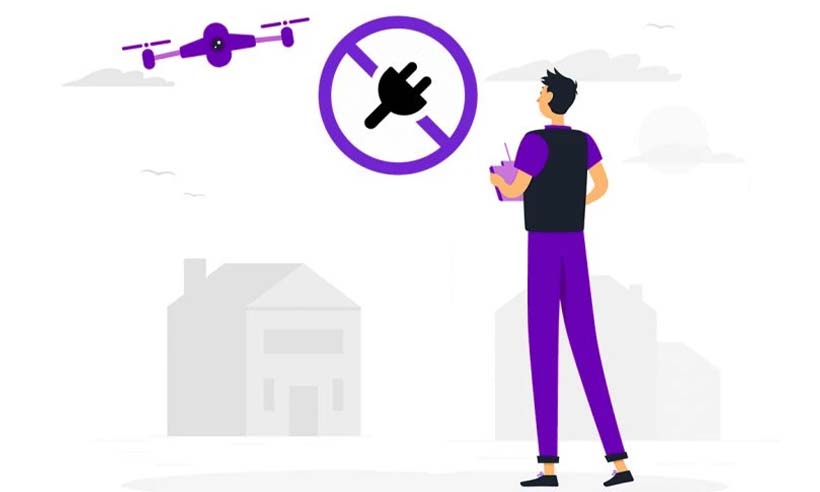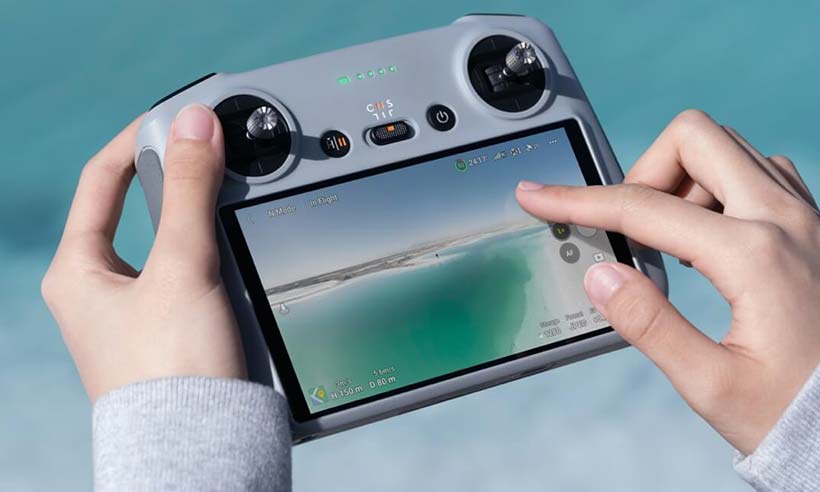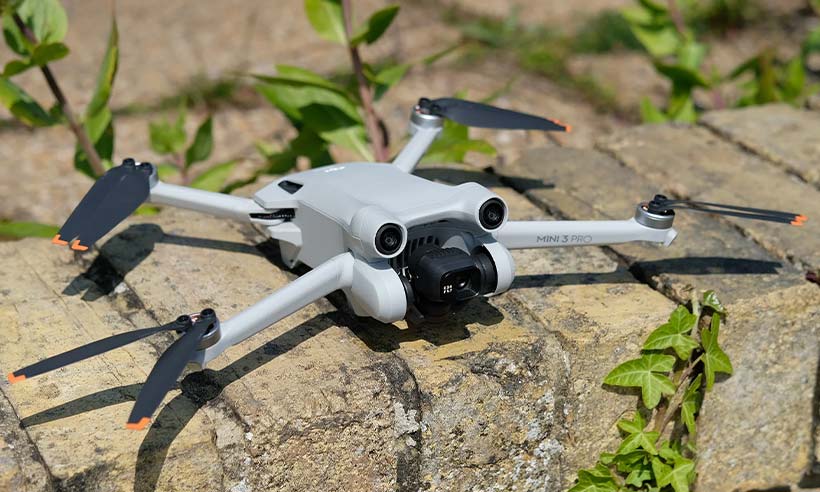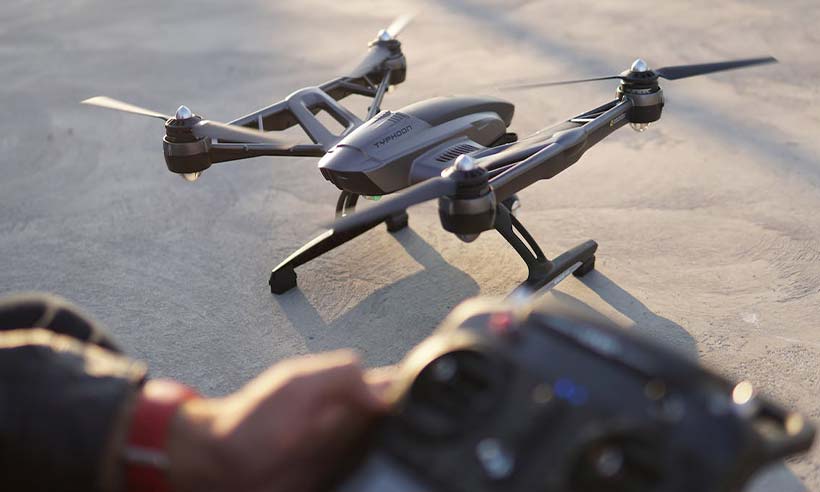Dronelost.com – As an owner of a drone, one of the most important aspects of the flying experience is ensuring a strong connection between the drone and the controller. If you’re experiencing connectivity problems, such as “My drone won’t connect to the controller,” it can be frustrating and hinder your ability to operate the drone effectively. But fear not. We provide easy-to-follow tips and tricks to help you fix the issue. With patience and persistence, you can fly your drone again in no time.
First, explain why your drone isn’t connecting to the controller. The most common causes for this issue are interference, weak signal, battery issues, or a damaged controller. Interference can occur due to large buildings, walls, radio waves from other devices, or even weather conditions. A weak signal could be due to distance or obstructions between the controller and the drone. Battery issues could occur if the drone or the controller’s battery is low or not fully charged. And the damaged controller is the least common reason for such problems, but it is still a possibility.
Now that we have a general understanding of what may be causing the issue let’s move on to the steps you can take to resolve the problem. The first and most simple solution is to ensure that the drone and controller batteries are fully charged. If the battery is low or dead, it will greatly impact the drone’s ability to connect to the controller. Therefore, checking the battery levels and recharging them before you start flying is crucial.
Another trick you can try is recalibrating the drone and the controller. This involves resetting the connection between the two devices, allowing them to recognize each other and establish a strong connection. You can refer to your drone’s manual or manufacturer’s website for specific instructions on recalibrating. If you have lost your drone, one effective method to locate it is by utilizing the “Find My Drone” feature available in some drone models, which utilizes GPS tracking to help pinpoint the last known location of the drone.
Common Reasons Why Drones Fail to Connect

Drones are amazing pieces of technology that have made it possible to capture breathtaking aerial images and videos. However, sometimes the drone fails to connect to the controller, which can be frustrating. There are several reasons why this might happen, and in this article, we will discuss some of the common ones.
Battery Issues
Battery issues are the most common reason the drone won’t connect to the controller. If the drone’s battery is low, it might not have enough power to connect to the controller. Therefore, before you fly your drone, you should ensure the battery is fully charged. If you have been using the drone for an extended period, you might need to consider getting a new battery. When troubleshooting connectivity issues, it’s important to consider your drone’s battery life. On average, drone batteries can provide a flight time of around 15 to 30 minutes, depending on the model and flying conditions.
Radio Interference
Radio interference is another common reason your drone might fail to connect to the controller. Many things, such as nearby radio signals or high-voltage power lines, can cause this. To avoid this problem, try to fly your drone in an area without too many radio signals and avoid high-voltage power lines.
Software Issues
Software issues can also cause your drone to fail to connect to the controller. If the drone’s software is outdated or corrupted, it might not work correctly. To solve this problem, you need to update the drone’s software. This can be done by connecting the drone to a computer and downloading the latest software update from the manufacturer’s website.
Moreover, another issue that can arise is the compatibility between the software. The drone and controller might be made by different companies, leading to compatibility issues. In this case, you need to check for any new software update for both the drone and controller, then update them accordingly.
Is Your Drone’s Controller Compatible?

One of the drone owners’ most common problems is when their drone won’t connect to the controller. This can be frustrating, especially if you are excited to fly your aircraft. Before you start worrying about what could be wrong, you first need to assess whether your drone’s controller is compatible with your drone. Here are the steps you should take to check for compatibility.
Know Your Drone’s Brand and Model
The first step in determining if your drone’s controller is compatible is to know the brand and model of your drone. Drones come in a variety of brands and models, and each has its unique specifications. For instance, a controller compatible with a DJI drone may not be compatible with a Yuneec drone. Therefore, knowing your drone’s model and brand will help you make an accurate determination.
Check Your Drone’s Manual
After you have identified the brand and model of your drone, check its manual to see which controller is compatible with your drone. The manual should contain a detailed description of compatible controllers, and you should be able to identify if your controller is a match. If you cannot find compatible controllers in the manual, search for the information on the manufacturer’s website. In some cases, manufacturers may release new models of controllers that are compatible with the drones they produce.
Check for Firmware Updates
Another reason why your drone’s controller may not connect is firmware. Firmware is software that runs on the drone’s hardware and controls its functions. Your drone may not connect to the controller if you have an outdated firmware version. Therefore, check if any firmware updates are available for your drone and controller. You can use the manufacturer’s website or app to check for updates and download them.
Check Battery Levels
Low battery levels can also prevent your drone from connecting to the controller. Therefore, check the battery levels of both your drone and controller to ensure that they are adequately charged. If you have used your drone and controller in the past and have been experiencing problems connecting them, it could be because the batteries are running low. Always ensure that the batteries are fully charged before connecting your drone and controller.
Reset Your Drone and Controller
If you have checked all the above steps and still can’t connect your drone and controller, try resetting both devices. A reset may clear any glitches that may be preventing them from connecting. To reset your drone and controller, refer to their manuals for the appropriate procedure.
Troubleshooting Tips for “My Drone Won’t Connect to Controller” Problem

Having issues connecting your drone to the controller can be both frustrating and time-consuming. This problem can arise due to various reasons, such as interference from other devices, obstruction of signal, among other things. If you are facing this issue, don’t worry; we have you covered. Here are some troubleshooting tips for drone connection issues step by step using numbered list:
1. Check Your Drone Batteries and Remote Control Batteries
This is the first thing that you need to check. Ensure your drone batteries are fully charged, and your remote control batteries are not depleted. Low battery levels can cause connectivity issues.
2. Check Your Wi-Fi Connection
Your drone connects to your remote control via Wi-Fi so a weak Wi-Fi connection can cause issues. Switch off other devices on the same Wi-Fi network and check if you are too far from your router, which can cause weak signal strength. If you are facing difficulties, try moving closer to your router to increase the signal.
3. Reset The Drone’s Wi-Fi Connection
If you are experiencing connection issues, disconnect your drone from your remote control’s Wi-Fi network and try to reconnect. This can help reset any connectivity issues between the two devices. You can also try resetting the Wi-Fi connection on your mobile device
4. Calibrate Your Drone
Ensure your drone is calibrated regularly since it can impact how it responds to flight commands and may cause connection issues. You can calibrate your drone using the manufacturer’s app, which can be downloaded from the App Store or Google Play.
5. Update the Drone firmware
Regularly check for firmware updates on the manufacturer’s website or app. Updating firmware can fix any connectivity issues and improve drone performance.
6. Check for any Physical Damages
Check for any damages to your drone or remote control. In case of any damage, the drones might behave differently, and such behavior can result in connectivity issues.
7. Restart The Drone and Remote Control
Restarting both the drone and remote control can help resolve connectivity issues. Turn off both devices and turn them on after a few minutes.
8. Observe Any Interferences
High-electromagnetic interference can lead to connection issues. This interference can come from objects like metals, electrical lines, or other Wi-Fi networks on the same site. To find out what’s interfering, walk around the area with your drone and observe when you lose connection. Keep your drone far from interfering objects.
9. Contact The Manufacturer
If you have tried all these tips and still can’t connect your drone to your remote, contact the manufacturer’s customer service team for help. They can offer additional troubleshooting steps or even repair services if your drone needs repairs.
With these practical troubleshooting tips for drone connection issues, we hope that you will be able to overcome any connection issues that might arise and enjoy flying your drone without any complications. It’s crucial to follow the drone manufacturer’s procedures to ensure that your drone operates safely and correctly.
Understanding Radio Interference and Its Impact on Drone Connection

One of the most frustrating things about flying a drone is when it won’t connect to the controller. There are many reasons why this might happen, but one common culprit is radio interference. Radio interference can cause many problems with your drone’s connection, and understanding how it works can help you fix issues more easily. Here are the steps to follow to understand radio interference and its impact on drone connection:
Learn About Radio Waves
Radio waves are a type of electromagnetic radiation that can travel through space. These waves are what allow your drone to communicate with the controller. However, they can be disrupted by other things in the environment, like buildings, trees, and even people. Understanding how radio waves work can help you identify potential sources of interference.
Identify Potential Sources Of Interference
As mentioned, buildings, trees, and people can interfere with radio waves. Other things to watch out for include power lines, electronic devices, and radio towers. If you are flying your drone in an area with these things, you may experience connection issues.
Minimize Interference
If you suspect that radio interference is causing your connection issues, you can do a few things to minimize it. For example, you can try flying your drone in a different area with fewer potential sources of interference. You could also try adjusting the frequency of your controller to avoid any radio waves that might be causing issues.
Use a Signal Booster
If you are still experiencing connection issues despite minimizing interference, you may want to consider using a signal booster. A signal booster can improve your drone’s signal strength by amplifying the radio waves sent from the controller. This can help to overcome some of the interference caused by other environmental factors. However, it’s important to note that signal boosters can’t overcome all types of interference and may not work for every drone. To use a signal booster, you’ll need to purchase one that is compatible with your drone and controller. Once you have the booster, you’ll need to follow the manufacturer’s instructions for installation and use. This may involve attaching the booster to the controller or to, your drone, or both. You may also need to adjust the frequency of your controller or other settings to ensure that the booster is working optimally.
Radio interference can be a frustrating problem when flying a drone, but understanding how it works and what you can do to minimize it can help. By learning about radio waves, identifying potential sources of interference, minimizing interference, and using a signal booster, you can improve your drone’s connection and enjoy more successful flights.
Conclusion
In conclusion, your drone not connecting to the controller can be frustrating and time-consuming, but it’s important to remain calm and patient throughout the troubleshooting process. First, ensure that both the drone and controller have a strong battery charge and are properly synced. If this doesn’t work, consider resetting both devices or updating the firmware. Additionally, it can be helpful to check for any signal interference or potential conflicts with other electronic devices. If all else fails, contacting the manufacturer or seeking professional help may be necessary. With these tips, you can connect your drone to the controller and enjoy your flying experience.
